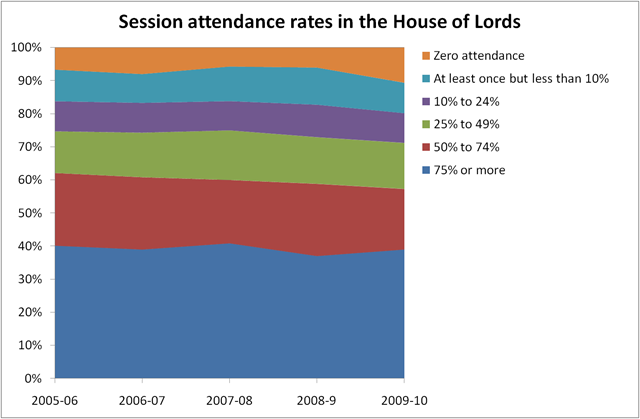In the past my blog was my diary, which was entirely private. I kept a diary on my Psion for a number of years before the feeling that I should make a daily, or at least a regular, entry on the minutiae of my life became oppressive and I gave up. More recently I resumed as a blogger, and rather than writing down minutiae I wrote in a more formal, extended style on things that were happening, or on my mind, for a more public audience. It still provided a record of what I thought when.
This post is difficult in the sense that it is somewhat private: I had a minor operation on the 23rd September and only now am I about to go back to work. My minor operation turned out to be a little more complicated then expected. The aftermath has taken up a significant portion of my time and dominated my thoughts for the last 6 weeks. I hasten to add that at no time has my life (or any part of my body) been at serious risk and I have only occasionally been in minor, localised pain and been a little inconvenienced. This is all a storm in a tiny little teacup, but it is my teacup and I have had some sort interesting experience along the way.
I will be circumspect about the exact nature of my affliction. I started with a visit to a GP, who packed me off to the consultant at my local hospital. This is where I had my “unexpected prostate examination”. *That* wasn’t the affected part! A useful experience really, because at some point later in my life a semi-regular prostate exam will probably be a good idea and to be honest, there’s nothing to it. Warning signs: men, if you are semi-clad and a doctor asks you to roll on your side and pull your knees up to your chest – ask him why first!
I have medical insurance as a taxable benefit of my job. My initial intention was to stick with the NHS – my local hospital is over the road from where I live, whilst the private hospital, I believed, was many miles away. It turned out the private hospital was closer, and the wait was shorter and the consultant clearly thought me mad for not exercising my insurance. My initial private consultation was just 4 days after I raised the issue, on a Saturday morning, with potentially my operation the following Thursday. As it was the operation was delayed a few weeks because I had visitors at work on the Friday coming from Sweden – and it seemed wrong to bounce them and then my surgeon was going on holiday, to Sweden, for a couple of weeks. Compare this with initial consultation wait of 1 month, and operation scheduled for almost three months later on the NHS. I don’t see this as a criticism of the NHS: to provide fast service requires that you have more capacity than you strictly need – we choose not to fund the NHS to that level. I’ve been very happy with my local NHS GP service, and the quality of the medical care they provide – I’m sure that the quality of the medical care I would have received from the local hospital would be similarly excellent.
The nice things about private medicine are: it happens pretty quickly (and conveniently), the surroundings are nice and you’re better separated from your fellow man. The people who join you in private medical care may or may not be more pleasant than those with whom you are treated with in the NHS but they do not generally share a room with you!
I didn’t sleep the night before my operation: I’d never had a general anaesthetic before and to be honest I was a little bit scared – it didn’t help that I’m passingly familiar with historical pre-anaesthesia tales of operations for bladder stones and a mastectomy: I had a minor fear that I would be fully conscious but unable to communicate. I was also scared I wouldn’t have my operation, because to be honest things were getting a bit difficult. My final fear was that I would wake from my anaesthetic with caffeine withdrawal – I’d been fasting for the previous 18 hours or so.
To start the day of my operation properly a wasp stung me on my toe!
General anaesthesia is extinction: there is consciousness, there is nothing, there is consciousness. Chatting to the anaesthetist as I went under I discovered I was getting propofol. I suspect the porters tasked with returning post-operative patients to their rooms have a collection of the most utter gibberish known to man. For my part I supplied them with the prime factors of my room number: 2 and 13, thank you for asking.
The first week or so after my operation passed easily, I’d expected to be off work for a week and I had some books to read. I even made a new website for the Chester Liberal Democrats. The next week or so it sort of dawned on me that the consultants slightly sweaty brow after the operation and the advice that I would take “a long time to heal” did mean something and I was indeed going to take “a long time to heal”. So here I am 6 weeks later during which I’ve largely been confined to the house.
Somewhat surprisingly I’ve done OK: I’ve read a lot, I’ve fiddled around with various computer programs, blogged a bit, shredded many old bills, re-organised things and not watched daytime TV and not even listened to the radio a great deal.
A visit to the consultant at about week 3 was somewhat surprising – I didn’t things were going too well, he thought they were going great! He has always appeared somewhat disdainful of patients, GP’s and a willingness to prescribe antibiotics for imaginary infection. He said mine was one of the more difficult operations of my type that he’d done. I suspect he wanted the medal I claimed for myself on that one.
The doctor (and consultants) views on the solubility of soluble stitches are quaint – their reported view is that they dissolve in 10-14 days. I started off with 20 stitches, six weeks ago. Number of stitches which have disappeared through dissolution: 3; Number that I’ve helped out: 12. Number remaining: 5. The nurse seemed a bit more clued up and said they “took ages”. I suspect the problem is that patients assume that they shouldn’t tell the doctor they’ve been fiddling with their stitches, so the doctor continues in the happy belief that stitches dissolve.
So that’s the story of my last 6 weeks, the funniest thing in all this is something my dad said; unfortunately it makes it pretty much absolutely clear what my operation was, and so I might leave it to an ephemeral tweet.



